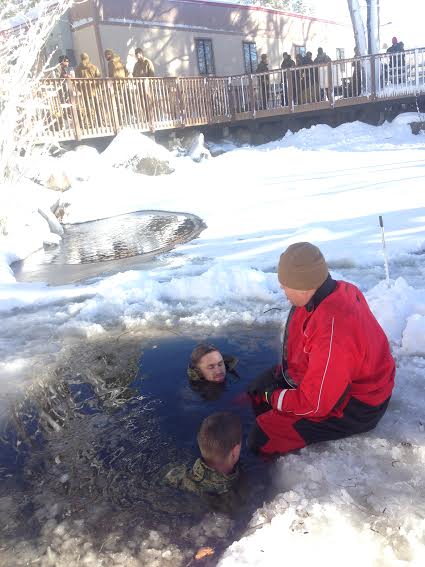How to Recognize and Prevent Hypothermia
To avid hikers, skiers, snowshoers, and anyone who loves the winter outdoors, staying warm is key to having a safe and enjoyable adventure.
Hypothermia is a serious and dangerous condition that people who are out in the cold for too long might catch. It causes your body temperature to drop, especially for those who are out in the cold for long periods of time. Although hypothermia is mainly an issue during the cold winter months, people have also been known to get it during a spring hike or in the ocean during a chilly day.
The body generally stays at a temperature of 98.6 degrees. When a body suffers from hypothermia, the body drops to below 95 degrees. With severe hypothermia, a body can drop to 82 degrees or lower.
One cause of hypothermia would be, quite obviously, exposure to cold. This is when the body is at a low temperature for a long period of time. Sometimes accidental hypothermia can occur: this happens after staying in cold temperatures without enough warm weather or dry clothing. For example, mountain climbers generally use high-tech gear that blocks out the wind and ice to avoiding hypothermia.
While most people think it’s just cold temperatures that cause hypothermia, mild temperatures may also contribute to it. It really depends on the person’s age, body mass and general health. For example, an older, weaker adult who lives in a 60 degree home may suffer from hypothermia overnight. Babies and toddlers may also develop hypothermia in a cold bedroom.
People with certain medical conditions are at a higher risk for developing hypothermia as well. People with diabetes or thyroid conditions, or even those taking certain medications, can experience hypothermia much faster.

When someone is exposed to the cold temperatures, they lose up to 90% of their body heat through the skin. The rest of the heat is exhaled through the lungs. Hypothermia also speeds up when a person’s skin is exposed to the wind or moisture. If someone falls through the ice and manages to get out and into the cold air, they loses their body heat 25 times faster.
When someone is cold they begin to shiver, which is the body’s way of trying to heat up again. Another way the body responds to the cold is that the blood vessels narrow temporarily. In a regularly heated body, the heart and liver help produce body heat.
As the body begins to cool down, the organs produce less heat as they begin to shut down. This way, the heart and liver’s heat protects the brain by keeping that warm as a priority. Eventually, should the colder temperatures persist, the heart, lungs, and brain start to get affected. That is when the body begins to feel tired and confused. At this point the body decides to shut down, making it harder for the person to make a clear, smart choice to move to safety.
People most at risk for hypothermia would include older people, babies, and children. Other people at risk include those with mental illnesses, those who are outside for long periods of time, and people who live in colder weather under the influence of drugs and alcohol.
Some of the symptoms of hypothermia in adults include shivering, slow breathing, confusion, drowsiness, slurred speech, loss of coordination, a slow pulse, and even unconscious. Symptoms for smaller children include cold at the touch and bright, red skin and unusually low energy.
In order to prevent hypothermia, recognizing the signs is the key. You can get a special thermometer that is available in most hospitals. This allows you to detect how low the body temperature is.
If a body temperature ranges from 89-95 degrees, it would be considered mild hypothermia. If a body ranges from 82-89 degrees, it would be moderate hypothermia, and if anything is lower than 82 degrees, it would be severe hypothermia, WebMD reported.
Be sure to take special care in noticing these situations, especially when it comes to young children and elderly adults. Hypothermia happens quickly and can be deadly.





